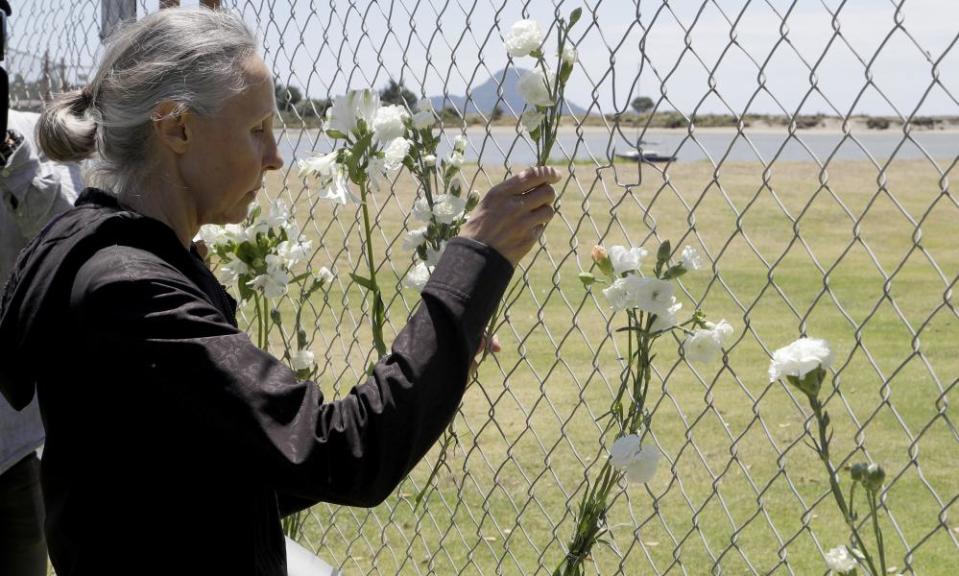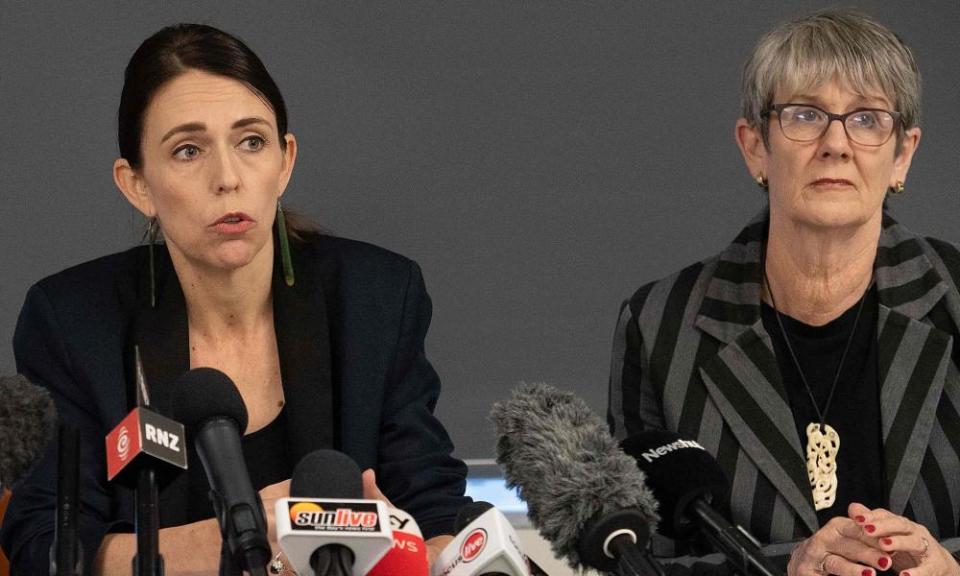'I don't have any hope': Whakatāne mourns after White Island eruption
On the shores of Whakatāne a small phalanx of mourners is standing guard, their gaze turned out to the Pacific Ocean. The water is an uneasy turquoise, and in the distance, 30 miles (50km) away, White Island’s rumbles are slowly quietening, its flanks just visible through the murky haze of early summer.
Waimarla Richards, 42, doesn’t know where else to go, or what else to do, so she sits on a park bench and stares at the sea. Her relative, Tipene Maangi, 23, is presumed dead on the island. More than 24 hours after the volcano erupted, Maangi’s whanau [family] have now given up hope of their boy returning home safely.
“We thought it was just having a blow-out, we didn’t know it would cause harm and take lives – it’s just horrible,” says Richards.
“I don’t have any hope. Now we know how the people at the Pike River mine [where 29 people died in 2010] felt – you can’t do anything, you just feel helpless.”
Related: 'He loved life': students, families and guides missing after White Island volcano disaster
Maangi started working for White Island tours in September, and his is one of eight bodies thought to on the island. Richards say that Maangi “loved the ocean, loved nature, loved people” and being a guide suited him perfectly – until the volcano he was showing off to tourists exploded under his feet.
‘When you go out to the island, you know there’s risk,” says Sharon Honatana, another of Maangi’s extended whanau.
“They have safety procedures, and masks, but it’s unpredictable. It’s mother nature. No one controls her.
“Knowing there’s eight still over there, I don’t know what to do but watch over them. And wait.”
Police, working with the military, have tried in vain all day to retrieve the bodies, but conditions remain too treacherous, and even drones have been unable to conduct reconnaissance missions amid strong winds and thick, toxic gases.
Patience is quickly wearing out among grieving families, and anger is beginning to simmer about why police will not land.
Whakatāne on Tuesday was sombre, and glum. Police cars and emergency vehicles cruised up and down the main street of the small coastal town, and the Red Cross set up an emergency support office in the public library, assisting family members with missing loved ones.

At Mataatua – the tribal meeting house for the local iwi, Ngāti Awa, who run the White Island tours – a large TV was erected, and an endless loop of Jacinda Ardern’s emergency press conference when the prime minister visited the town on Monday evening. Sandwiches and fruit were laid out for grieving families, who gathered first with some hope, and then eventually with resignation, as police remained firm in their assessment that no one remained alive on the island.
At the Whakatāne wharf, three large White Island tour boats were berthed, one with a dingy still covered in ash.
Operators cancelled tours offering dives or trips to nearby islands, and commercial fisherman spent the day scrubbing their boats after police banned any vessels from travelling within five nautical miles of White Island.

Roy McIntyre, 60, has been a fisherman in Whakatāne for decades and says the volcano “has been meek and mild for about 30 years”, but prior to that it was “a blowing-up, burnt mess for about 20 years”.
“It is a tragic, natural event but I am sure there will be people to blame, and there should be people to blame,” said McIntyre.
“Older people in town envisaged this when they started doing the tours 30 years ago. Because White Island is White Island – you don’t know when it’s going to blow up. I thought it was a matter of time and they were probably lucky to get away with it for this long really.”
The mayor of Whakātane, Judy Turner, said she would continue to support tourism on White Island, despite Monday’s tragic events. But with the death toll likely to climb, due to some of the injured being severely burned, hers is a sentiment that is finding little traction.
“At the time they went out [the eruption alert] was a level two, and in the matrix of things that is not considered a high reading ... they have been out numerous times at that level,” Turner said, appearing to defend the tour company’s decision to take 47 people to the island, despite weeks of increased activity.

“You’ll be aware that tourism is significant for our local area. We are aware there are questions and you can be assured ... that at the appropriate time we will answer the questions that need to be asked.”
However, many local residents told the Guardian they have felt unease about the tours for years. Some local Māori say the island, viewed as an ancestor by many, erupted as a sign of protest at too many visitors, too many boats.
Related: Whakaari eruption on private island was 'disaster waiting to happen', says expert
“It must be one of our largest tourism disasters, it’s major for our small town and the country’s tourism industry as a whole,” says Phil van Dusschoten from Diveworks Charters Fishing and Diving, who has worked off White Island for 24 years.
“Like anything, I guess, to do with nature, if you’re going to put more people out there, more frequently, in greater numbers, over a longer period of time – it is always going to increase the chances of something happening. We’re still learning about volcanoes all the time; to have only a second’s notice, I suppose we just can’t account for it.”

 Yahoo News
Yahoo News 
